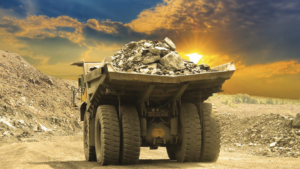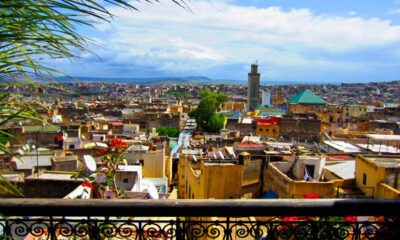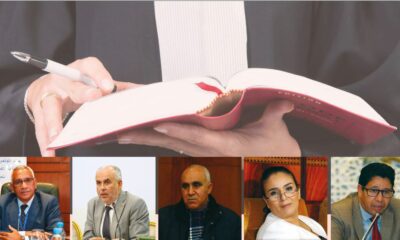Kingdom
Steel Industry: A Strong Recovery on the Horizon
The sector is bouncing back with rising demand driving the recovery. Production capacities are increasing, and the African Continental Free Trade Area (AfCFTA) presents new opportunities. However, competitiveness challenges remain. Here’s an overview.

The outlook for the national steel industry is brightening. After enduring a challenging period marked globally by volatile raw material and energy prices, and locally by declining demand and fierce, sometimes unfair competition driving prices down, industry professionals are now optimistic about the second half of the 2030s.
Internationally, iron ore prices are stabilizing, which is welcome news for local steelmakers sensitive to price fluctuations. “Iron ore prices are relatively stable. Traditionally, it’s around $70 per ton. However, prices have recently exceeded this, currently hovering around $100 per ton,” says Ismail Akalay, CEO of Sonasid Group and President of the Moroccan Steel Association (ASM).
A rebound in demand
On the national front, demand, which has been sluggish in recent years, is finally showing signs of recovery. While the real estate sector, a major consumer of steel, remains hesitant to boost demand until the government’s housing assistance program gains momentum, large infrastructure projects initiated by the government are acting as catalysts for the construction market and, consequently, steel consumption. Moroccan producers are well-positioned to meet this resurgence, thanks to abundant supply.
“The installed capacity of steel mills in Morocco is 4 million tons of steel. For rebar and wire rod production, we have a capacity of 3 million tons,” explains Ismail Akalay, noting that these capacities can fully satisfy the country’s needs.
“Considering the major projects announced by the government, we will play a key role in infrastructure projects related to railways, airports, hotels, water systems, etc. We could increase our production by 20 to 25%,” Akalay adds, highlighting significant investments made in recent years to boost production capacities.
Recent investments include those by Riva Industries, which inaugurated a steel complex in Jorf, and Sonasid, which invested over 800 million dirhams, including a capacity expansion program.
The increase in production capacity also fuels interest in exports, particularly to Africa, where the African Continental Free Trade Area (AfCFTA) presents new opportunities for Moroccan steelmakers. “The African market offers great development prospects,” confirms Akalay.
“This market consumes 8 million tons of rebar annually. Currently, our products face a 22% tax in African countries. Once this tax burden is lifted, we can significantly enhance our competitiveness against international competitors. The implementation of the AfCFTA represents a real growth opportunity for our sector.”
Competitiveness challenge
Enhancing competitiveness remains a strategic priority for Moroccan steelmakers, impacted by several factors. A significant one is the reliance on imported scrap metal for production.
“The Moroccan steel market depends on international scrap price fluctuations, while other global players have either iron ore or a stable local scrap supply. This makes us vulnerable to price swings,” says the CEO of Sonasid, a market leader.
Another factor affecting competitiveness is taxation. Moroccan rebar is taxed at 100 dirhams per ton to fund the Special Housing Fund. According to Akalay, “This tax significantly disadvantages us in exports. Contrary to popular belief, the operating margin for rebar is extremely tight, around 2 to 3%. Our competitiveness gap with international competitors is between 5 and 10 euros per ton, which is significant. We have requested that this tax not apply to products intended for export.”
The third factor is energy costs, which remain high. Electricity costs are steep compared to countries in the Middle East, and fuel prices fluctuate widely from week to week.
This is why steelmakers are focusing on natural gas and even green hydrogen. “Natural gas represents a strategic opportunity for us, especially for our Nador industrial site near the Tendrara field. However, this will require substantial investment to establish a hybrid rolling mill using both fuel and gas. Moreover, if a hydrogen supply emerges in the future, it could partially or fully replace gas.”
Sonasid: leading the way
Amid challenges and opportunities, steelmakers are rethinking their strategies. Sonasid, as the sector’s leader, is setting the example. The CEO explains: “Our main question was whether to stick to a commodity-based strategy, sensitive to international price fluctuations, or to diversify into high-value steel production.”
This shift involves significant investments in R&D, innovation, and launching high-value products that not only improve margins but also open new markets. “In 2023, the first R&D lab in Morocco’s steel sector was established at Sonasid’s Jorf Lasfar site, supporting new product development and process optimization.
Our product portfolio now includes high-value steel like steel fiber, enhancing the ‘Made in Morocco’ brand in major construction projects across Europe, North America, Africa, and the Middle East. In 2023, we also entered the automotive segment, which promises exciting growth opportunities for Sonasid.”
On the energy front, Sonasid’s plants are powered 90% by green energy. High-value products developed in Nador, such as steel fiber, benefit from 100% green energy thanks to a 4 MW solar park, expanding to 6 MW. “This capacity allows us to produce green steel,” Akalay notes. In December 2024, Sonasid began producing prestressed wire, a high-value product previously fully imported. “Prestressed concrete wire is crucial for optimizing modern construction projects, contributing to safer, more sustainable infrastructure. We’ll prioritize Moroccan market needs and consider exports.”
“Our goal is to establish a new industrial unit each year. In 2025, we’ll start recycling copper and aluminum, enriching Sonasid’s product portfolio.”
In 2026, we plan to expand our steel mill. “In 2023, we launched a modernization program to increase production capacity. Currently, the mill produces 700,000 tons annually, aiming for 1 million tons by 2026. A budget of 250 million dirhams is allocated to this project, which will also significantly improve our sites’ environmental performance,” details Akalay. Since 2021, over 800 million dirhams have been invested.
“The key is to evolve this value chain,” he asserts, concluding with one of the company’s iconic slogans: “We’ve been building Morocco for 50 years and will continue to do so.”
EU carbon tax: Sonasid is ready
The steel industry is among those affected by the European Union’s carbon border tax, targeting industries with CO2 emissions. According to Akalay, Sonasid is prepared to avoid penalties. “We’re ready and obtained EPD certification for our long steel last year. In Europe, steel is considered ‘green’ if it emits less than 500 kg of CO2 per ton. During our certification, we were at 460 kg, and now we’re approaching 400 kg.”
He adds, “We can sell our products in the European market without paying this tax. Currently, we’re the only ones in Morocco with this certification for long steel.” It’s worth noting that Maghreb Steel also produces green flat steel.
Competition
The competitive environment in the steel sector remains intense. In China, a decline in the real estate sector has reduced demand compared to supply, leading to massive exports. “Exports exceeded 100 million tons between 2023 and 2024.”
In the MENA region, countries like Egypt, Turkey, and several Gulf states are major exporters. Some producers began exporting to Morocco in 2023, sometimes engaging in dumping practices.
“In Morocco, all billets are produced by electric arc furnaces emitting less CO2. However, products made from blast furnaces generate significant CO2 emissions. Blast furnaces emit about 2 tons of CO2 per ton of steel, while a typical electric furnace emits 800 kg per ton. At Sonasid, we’re under 400 kg per ton and remain committed to further reducing our carbon footprint.” These environmental standards are increasingly becoming performance criteria for steel operators.















